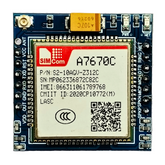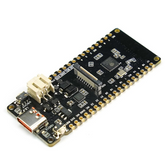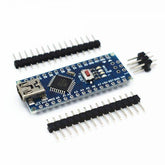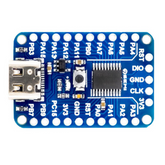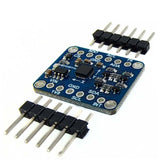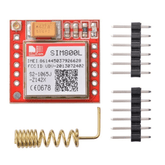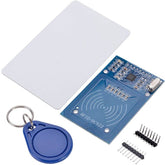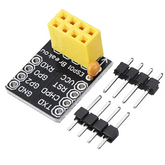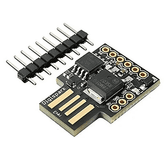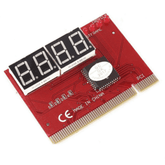Top IoT Boards and Modules for Smart Projects in 2025
Summary
The Internet of Things has transformed from a futuristic concept into everyday reality. From smart homes that adjust lighting based on your mood to industrial sensors monitoring equipment health in real-time, IoT boards and IoT modules form the backbone of these innovations.
Choosing the right development platform can make the difference between a smooth prototyping experience and endless troubleshooting sessions. This guide explores the top boards and modules powering smart projects in 2025.

What to Look for When Choosing an IoT Board
Before diving into specific products, understanding what makes a great IoT development platform is crucial.
- The first consideration is connectivity options. Does your project need WiFi, Bluetooth, cellular, or a combination? IoT hardware supporting multiple protocols offers flexibility as project requirements evolve.
- Processing power matters significantly. Simple sensor readings require minimal computational resources, while edge computing boards for IoT handling image recognition or real-time data analytics demand robust processors. The balance between performance and power consumption becomes especially critical for battery-operated devices where every milliampere counts.
- Pin availability and peripheral support determine how many sensors and actuators you can connect directly. Look for boards offering I2C, SPI, UART, and sufficient GPIO pins for your anticipated needs. Community support and documentation quality often matter more than raw specifications—a well-documented platform with active forums saves countless development hours.
- Cost considerations extend beyond the board itself. Factor in development tools, programming environments, and the learning curve. Some platforms offer free integrated development environments while others require paid software licenses. Compatibility with existing IoT sensors and components in your inventory can reduce overall project costs significantly.
Top IoT Boards for Smart Projects in 2025
ADIY A7670C GSM 4G Breakout Board V1.1

When your IoT project demands reliable cellular connectivity, the ADIY A7670C GSM 4G Breakout Board delivers professional-grade communication capabilities in a compact form factor.
This board integrates the A7670C module, providing multi-band LTE Cat-1 connectivity that ensures your devices stay connected across diverse geographical locations.
Its compatibility with standard microcontroller platforms makes it an excellent choice for remote monitoring applications where WiFi infrastructure doesn't exist.
- Multi-band LTE Cat-1 connectivity: Supports multiple cellular frequency bands ensuring reliable connection across different regions and network providers for global deployment capabilities
- Breakout design for easy integration: All essential pins exposed including UART communication interfaces, power management connections, and SIM card slot for straightforward integration into custom projects
- Low power modes: Energy-efficient operation with sleep modes that extend battery life for solar-powered or battery-operated remote installations in agricultural and environmental monitoring
- Onboard voltage regulation: Built-in power management circuitry handles input voltage variations and provides stable operation without external regulators
- Compatible with multiple microcontrollers: Works seamlessly with Arduino, ESP32, STM32, and other popular development platforms through simple serial communication
DFRobot FireBeetle 2 ESP32-C6 IoT Development Board

The FireBeetle 2 ESP32-C6 represents the cutting edge of ESP32 IoT board technology, featuring WiFi 6 support that future-proofs your projects for next-generation networks.
This IoT development board combines the ESP32-C6 microcontroller with thoughtful power management, making it ideal for battery-powered applications demanding both performance and longevity.
The compact form factor and castellated mounting holes facilitate integration into professional enclosures.
- WiFi 6 and Bluetooth 5 LE support: Next-generation wireless connectivity with improved efficiency in crowded networks, better range, and reduced power consumption during active transmission
- Solar charging capability: Integrated charging circuit accepts input from small solar panels enabling autonomous outdoor deployments for weather stations and environmental sensors
- Ultra-low power consumption: Advanced power management with deep sleep modes drawing microamps, extending battery life to weeks or months depending on usage patterns
- Compact breadboard-friendly design: Small footprint with castellated edges for direct PCB integration or easy prototyping on standard breadboards
- Arduino and MicroPython compatible: Flexible programming options supporting multiple development environments with extensive library support for rapid prototyping
Arduino Nano R3 Board with CH340 Chip

Sometimes the classic approach remains the best choice. The Arduino IoT board Nano R3 with CH340 chip offers proven reliability and vast ecosystem support that beginners and professionals alike appreciate.
This miniature powerhouse runs the ATmega328P microcontroller, the same chip that powered countless Arduino Uno projects, but in a breadboard-friendly footprint.
Educational institutions favor this board for teaching fundamental electronics and programming concepts.
- ATmega328P microcontroller: Reliable 16 MHz processor with 32KB flash memory and 2KB SRAM providing sufficient resources for most sensor and control applications
- CH340 USB-to-serial converter: Stable communication across Windows, Mac, and Linux platforms without driver complications on modern operating systems
- Breadboard-compatible footprint: Compact design with 0.1-inch pin spacing fits directly into standard breadboards for rapid prototyping without additional hardware
- Extensive library ecosystem: Access to thousands of Arduino libraries for sensors, displays, communication protocols, and actuators simplifying development
- Cross-platform IDE support: Arduino IDE works seamlessly on all major operating systems with simple upload procedures and built-in examples for learning
STM32 Mini Development Board with STM32G030F6P6 MCU

The STM32 IoT board mini development board showcases the power of ARM Cortex-M0+ architecture in an incredibly compact package.
The STM32G030F6P6 microcontroller delivers 64 MHz performance with exceptionally low power consumption, making it perfect for applications where every microwatt matters.
This board appeals to developers transitioning from 8-bit platforms to modern 32-bit architectures while requiring professional-grade capabilities.
- ARM Cortex-M0+ 64 MHz processor: Modern 32-bit architecture delivering superior performance compared to traditional 8-bit microcontrollers while maintaining energy efficiency
- Ultra-compact form factor: Minimal board size ideal for space-constrained applications including wearables, portable medical devices, and embedded industrial sensors
- STM32CubeIDE development environment: Professional-grade free IDE with graphical configuration tools, sophisticated debugging, and automatic code generation capabilities
- Rich peripheral set: Multiple timers, ADC channels, communication interfaces (I2C, SPI, UART), and DMA controllers supporting complex applications and sensor fusion
- Real-time operating system support: Compatible with FreeRTOS and other RTOS platforms enabling multi-tasking applications requiring deterministic response times
ICM-20948 9DoF IMU Breakout Board

Motion sensing capabilities elevate IoT projects from simple data collection to intelligent systems understanding their physical context.
The ICM-20948 9DoF IMU breakout board combines a 3-axis gyroscope, 3-axis accelerometer, and 3-axis magnetometer in a single package, providing comprehensive motion and orientation data.
This sensor board represents a significant upgrade from the popular MPU-9250, offering improved accuracy and lower noise characteristics.
- 9-axis motion tracking: Integrated 3-axis gyroscope, 3-axis accelerometer, and 3-axis magnetometer providing complete orientation and motion data in a single compact module
- I2C and SPI interface support: Dual communication protocol options enabling easy integration with virtually any IoT development board platform and flexible bus architecture
- Improved accuracy over MPU-9250: Enhanced sensor performance with lower noise floor and better temperature stability for precision applications requiring accurate measurements
- Digital motion processing: Onboard digital motion processor handles sensor fusion calculations reducing microcontroller computational load
- Wide application range: Suitable for drone flight controllers, robotic navigation, VR tracking, fitness devices, and smart home occupancy detection systems
Best IoT Modules for Connectivity and Communication

SIM800L GPRS GSM Module
The SIM800L GPRS GSM module remains a workhorse for cellular connectivity in IoT projects where 4G capabilities exceed requirements or budget constraints.
This compact module supports quad-band GSM/GPRS networks, ensuring global compatibility for projects deployed across different continents.
5G and LoRa IoT modules may capture headlines, but 2G networks persist in many regions and offer sufficient bandwidth for telemetry data transmission.
- Quad-band GSM/GPRS support: Compatible with 850/900/1800/1900 MHz frequencies providing global network coverage for international deployments and roaming applications
- SMS and voice call capability: Dual communication channels supporting both data transmission and SMS-based alerts providing reliable fallback when data connections fail
- UART serial interface: Simple four-wire connection (TX, RX, VCC, GND) to any microcontroller enabling straightforward integration without complex protocols
- Low cost for basic connectivity: Affordable cellular connectivity solution for projects requiring occasional data transmission or remote telemetry updates
- AT command control: Standard AT command set simplifies programming with extensive documentation and example code available across multiple platforms
RC522 RFID Card Reader Writer Module
Access control and inventory management systems rely on RFID technology, and the RC522 module provides an affordable entry point into this ecosystem.
Operating at 13.56 MHz, this IoT module reads and writes Mifare Classic cards and tags, the same technology used in countless commercial applications.
Building a smart door lock, attendance tracking system, or inventory management solution becomes straightforward with readily available libraries and code examples.
- 13.56 MHz RFID technology: Industry-standard frequency compatible with Mifare Classic 1K cards and tags commonly used in access control and identification systems
- Read and write capability: Full read/write functionality enabling custom data storage on RFID tags for inventory management and interactive applications
- SPI interface for fast communication: High-speed serial peripheral interface supporting rapid card detection and data transfer with minimal latency
- Compact module design: Small form factor easily fits into custom enclosures for door locks, attendance systems, and portable RFID readers
- Extensive library support: Arduino, ESP32, and Raspberry Pi libraries available with example projects for rapid development and implementation
ESP8266 ESP-01 Serial WiFi Transceiver Module
The NodeMCU module family gained fame, but the ESP8266 ESP-01 variant deserves recognition for bringing WiFi connectivity to existing microcontroller projects with minimal modifications.
This tiny module exposes just eight pins yet packs a complete WiFi stack and capable processor running at 80 MHz. Serial AT command interface allows legacy microcontrollers for IoT like the Arduino to gain internet connectivity without code modifications.
- Complete WiFi stack in minimal footprint: 802.11 b/g/n wireless connectivity with TCP/IP protocol stack built-in, measuring just 25mm x 15mm for space-constrained applications
- Dual-mode operation: Functions as WiFi adapter for other microcontrollers using AT commands or standalone programmable controller using Arduino IDE or MicroPython
- 80 MHz processor with 1MB flash: Sufficient processing power and storage for standalone IoT applications including web servers and sensor nodes
- Low cost connectivity upgrade: Most affordable way to add WiFi capability to existing Arduino or other microcontroller projects without hardware redesign
- GPIO pins for direct sensor connection: Two general-purpose I/O pins available for connecting sensors or controlling simple actuators when used standalone
SIM800L GSM GPRS Wireless V2 Module with Antenna
The enhanced V2 version of the SIM800L addresses several pain points from the original design. The included antenna eliminates the need for separate RF components, while improved power circuitry reduces the capacitor requirements that complicated original implementations.
This evolution makes cellular connectivity more accessible to makers without RF engineering backgrounds. Remote monitoring applications in areas lacking WiFi coverage find this module invaluable.
- Integrated antenna included: Pre-attached antenna eliminates need for external RF components and impedance matching, simplifying hardware integration for beginners
- Improved power management: Enhanced voltage regulation and current handling reduces external capacitor requirements from original SIM800L design
- HTTP and MQTT protocol support: Built-in TCP/IP stack with HTTP client and MQTT capabilities for direct cloud platform integration with IoT services
- SMS alert functionality: Reliable text message capability for sending threshold alerts and receiving configuration commands in remote locations
- Global quad-band coverage: Supports 850/900/1800/1900 MHz GSM frequencies ensuring compatibility across different countries and cellular networks worldwide
HC-06 Bluetooth Sensor Module
Short-range wireless connectivity remains relevant despite the proliferation of WiFi and cellular options. The HC-06 Bluetooth module provides reliable serial communication up to 10 meters, perfect for smartphone-controlled projects and wireless sensor networks within confined spaces.
This classic module continues appearing in IoT kits due to its simplicity and reliability. The serial profile implementation means any microcontroller with UART capability can communicate wirelessly within minutes.
- Bluetooth 2.0 serial profile: Standard SPP (Serial Port Profile) implementation enabling transparent wireless serial communication compatible with most smartphones and computers
- Simple UART interface: Direct connection to any microcontroller serial port with automatic baud rate configuration for plug-and-play operation
- 10-meter operating range: Sufficient wireless coverage for indoor projects including robotics, home automation, and portable device control applications
- Low power consumption: Energy-efficient operation suitable for battery-powered devices requiring occasional wireless data transfer or remote control
- Easy smartphone integration: Compatible with numerous Android and iOS terminal apps enabling custom control interfaces without complex app development
IoT Development Trends to Watch in 2025
Smart devices are getting smarter by processing data right where it's collected. Many IoT project components now include built-in chips that can run simple AI tasks like recognizing voices or detecting unusual patterns.
This means devices work faster and protect your privacy better since data doesn't always need to travel to the cloud.
Wireless power is becoming practical for everyday use. Solar panels and motion-based energy harvesting are now built into many IoT development kits, letting sensors run forever without battery changes. This works great for outdoor weather stations or sensors in hard-to-reach places.
Getting different smart home devices to work together used to be frustrating, but the new Matter standard is fixing this problem.
Boards supporting Matter can connect with Apple HomeKit, Google Home, and Amazon Alexa all at once, making it much easier to build devices that work everywhere.
Security is finally getting the attention it deserves. New IoT hardware includes special security chips and encrypted communication as standard features rather than optional extras. This protects both your devices and your data from hackers.
How to Choose the Right IoT Board for Your Project
First, think about how your project needs to connect. If your device will be near a WiFi router, boards like the ESP32 IoT board are perfect and cost-effective.
But if you're building something for remote locations without WiFi, you'll need cellular modules like the A7670C. You can also mix approaches—use a Raspberry Pi for IoT projects as a central hub that collects data from smaller, battery-powered sensor boards.
Next, consider what your project actually does. Reading temperature sensors and sending data doesn't need much power—simple Arduino IoT boards handle this easily.
But if you're working with cameras, running calculations, or doing multiple tasks at once, you'll need more powerful boards with better processors and more memory.
Check if the board has good support and documentation. Boards with lots of tutorials, active online communities, and plenty of code examples will save you tons of time and frustration.
Robocraze carefully selects boards that are well-documented and widely used, so you won't get stuck with a board nobody knows how to help you with.
Finally, think about your total budget, not just the board price. Sometimes paying a bit more upfront gets you a board with built-in features that would cost extra to add separately.
Consider how long development will take and whether you might need to buy additional tools. Robocraze offers competitive prices and helpful support, making it easier to try different boards without breaking your budget.
Conclusion
The IoT landscape in 2025 offers unprecedented choice, from compact modules adding connectivity to existing systems through complete development platforms supporting sophisticated edge computing.
Whether building your first sensor node or designing a production system, matching board capabilities to project requirements ensures success.
The platforms highlighted here represent proven technologies with strong community support and clear documentation paths.
As IoT technology continues evolving, these fundamental building blocks enable creators to transform concepts into connected reality, one smart project at a time.



